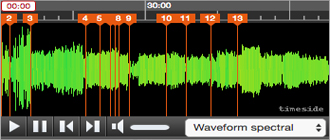Who are we ?

The Centre for Arab and Mediterranean Music (CAMM) is an institution operating under the authority of the Ministry of Culture and Heritage Conservation. It was established on 20 December 1991and its statutes were enacted in October 1994. Three years later the CAMM was awarded the Honoris Causa Prize by the International Music Council (UNESCO).
With its dual Arab and Mediterranean dimensions the CAMM was designed to serve both as a museum space and as a space to promote activities devoted to musical heritage. Its programmes are developed in four complementary directions:

-Conservation and dissemination of musical heritage.
- Museographical activities
- Study and Research
- Artistic programming and promotion of musical events.
The CAMM is housed in the prestigious Ennejma Ezzahra Palace, a substantial residence built by Baron Rodolphe d’Erlanger between 1912 and 1922, on the hillside below the village of Sidi Bou Said, 17 km north of Tunis.
The baron d’Erlanger was a talented Orientalist painter and a and a celebrated scholar scholar of music, known primarily for his remarkable musicological work in French, entitled La Musique Arabe. This reference work was published in Paris by Paul Geuthner and consists of six volumes of valuable research.
Since its inception, the Centre for Arab and Mediterranean Music has endeavoured to encourage interdisciplinary approaches within the vast domain of music. The manner in which it is structured into departments with distinct mandates and specific modes of operation allows for a certain degree of autonomy. However, the institution’s overall operational policy is to promote synergy between the different parts of the whole and to draw up integrated work programmes.
In addition to the department devoted to the Promotion of musical activities and to Studies and Research, the CAMM houses the National Sound Archive, a key component whose mandate is to collect Tunisian and Arab musical heritage for the purpose of conserving, disseminating and making it available to researchers in the field of music.
The National Sound Archive’s holdings are constituted from several sources.
- Recordings made during field collection campaigns and archiving of concerts performed during international festivals in Tunisia.
- Commercial recordings deposited within the framework of legal deposit of phonographic works.
- Sound documents transferred from external holdings, held by national and foreign institutions as well as documents obtained through exchanges with similar institutions.
As the repository of sound documents resulting from the application of legal deposit, the National Sound Archive’s vocation is to publish a national discography.
The CAMM also includes an instruments-making workshop dedicated both for the restoration of the musical instruments collection and for carrying out organological research.
© 2014 CMAM. All rights reserved. Designed by All Best Services





